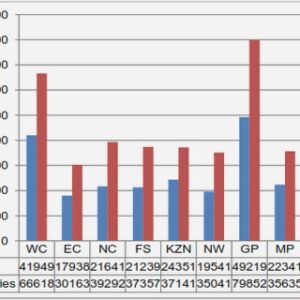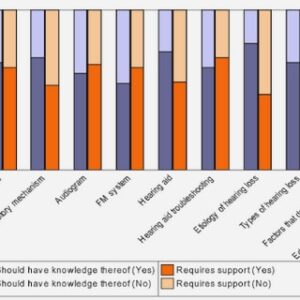(Downloads - 0)
For more info about our services contact : help@bestpfe.com
Table of contents
Chapter 1: Bibliographic review and scope of thesis work
Introduction
1.1 Hydrogen: a clean energy vector for future
1.2 Options for hydrogen storage
1.2.1 Solid-state storage of hydrogen
1.2.2 Lightweight metal hydrides
1.3 Modifications of hydrogen sorption properties
1.3.1 Mechanical effects of ball milling
1.3.2 Severe plastic deformation (SPD) techniques
1.3.3 Influence of additive/catalysts
1.4 Scope of thesis work
References
Chapter 2: Experimental materials, methods and characterization techniques ..
2.1 Selected materials
2.2 Processing routes
2.2.1 Arc-plasma method
2.2.2 High-pressure torsion (HPT)
2.2.3 Two-step HPT consolidation
2.3 Characterization techniques
2.3.1 X-ray tomography (XRT)
2.3.2 X-ray diffraction (XRD) .
2.3.3 Hardness testing
2.3.4 Scanning electron microscope (SEM)
2.3.5 Electron backscatter diffraction (EBSD)
2.3.6 SEM based transmission Kikuchi diffraction (SEM-TKD) ..
2.3.7 Transmission electron microscope (TEM)
2.3.8 Sievert-type apparatus
2.3.9 Differential scanning calorimetry-thermogravimetry (DSC-TG)
2.3.10 Raman Spectroscopy
References
Chapter 3: Understanding of high-pressure torsion (HPT) processing in case of bulk as well as powder materials for relatively thick-samples
Introduction
Part I: Effects of processing conditions on heterogeneities in strain, microstructure and hardness in two bulk materials: aluminum alloy and commercial purity magnesium
3I.1 X-ray tomography
3I.1.1 Gradients in shear deformation
3I.1.2 Strain analysis
3I.2 EBSD characterizations
3I.2.1 Aluminum alloy
3I.2.2 Commercial purity Mg
3I.3 Evolutions of microhardness
3I.4 Discussion
Part II: HPT consolidation of two distinct Mg powders: Influences of nature of initial powder precursors on evolutions of microstructure, texture and strength
3II.1 Structural characterizations
3II.1.1 X-ray diffraction (XRD)
3II.1.2 SEM observations
3II.2 EBSD and TKD characterizations
3II.2.1 Micro-HPT product obtained from atomized Mg
3II.2.2 Nano-HPT product obtained from condensed Mg
3II.3 Microhardness evolution
3II.4 Discussion
3II.4.1 Effects of severe plastic deformation through HPT
3II.4.2 Significance of MgO oxides
Chapter’s conclusions
References
Chapter 4: Study of improvements in hydrogen storage properties of high-pressure torsion (HPT) consolidated magnesium products
Introduction
4.1 First hydrogenation kinetics
4.2 Hydrogen sorption properties
4.2.1 Thermodynamics of absorption/desorption
4.2.2 Kinetics of hydrogen absorption
4.2.3 XRD of the hydrided products
4.3 Desorption performances
4.4 Microstructural modifications upon cycling
4.5 Discussion
4.5.1 Consequences of the processing route
4.5.2 Influences of the nature of initial powder precursors
4.5.3 Effects of the absorption/desorption cycling
Chapter’s conclusions
References
Chapter 5: Hydrogen storage properties of Mg-Fe based composites fabricated by high-pressure torsion consolidation of magnesium and iron powder precursors
Introduction
5.1 Structural characterizations of the HPT composites
5.1.1 Consolidated microstructures
5.1.2 XRD analysis of the HPT composites
5.1.3 XRD analysis of the hydrided products
5.2 First hydrogenation kinetics
5.3 Hydrogen sorption properties
5.3.1 Thermodynamics of absorption/desorption
5.3.2 Kinetics of hydrogen absorption
5.3.3 Hydrogen desorption by thermal decomposition
5.4 Discussion
5.4.1 Effects of the processing route
5.4.2 Nature of the initial powder precursors
5.4.3 Catalytic effects
Chapter’s conclusions
References
Chapter 6: Hydrogen storage properties of as-synthesized and high-pressure torsion (HPT) consolidated magnesium-graphene based composites
Introduction
6.1 Structural characterizations
6.1.1 Morphology and microstructure
6.1.2 X-ray diffraction (XRD) analyses
6.1.3 Raman spectroscopic analysis
6.2 First hydrogenation characteristics
6.3 Hydrogen sorption properties
6.3.1 Thermodynamics of absorption/desorption
6.3.2 Kinetics of hydrogen absorption
6.3.3 Hydrogen desorption behaviors
6.4 Discussion
6.4.1 Peculiarity in powder formation and its consequences
6.4.2 Effects of severe plastic deformation through HPT
Chapter’s conclusions
References



